Steve Grody Interview

How did you get interested and involved with graffiti?
Steve Grody: I have been interested in letters and art since I was a kid. I remember doing bubble letters in my notebook in grade school. Later, I became interested in poster art of the psychedelic ’60s and by extension the art of Mucha and Beardsley and the like, so it was natural thing for me to find the new lettering of modern graffiti very compelling.

How long have you been documenting Los Angeles graffiti?
Steve Grody: Since June of 1990 I believe. I saw things going on since the mid ’80s, but it wasn’t until I accidentally came across the Belmont Tunnel after the Slick/Hex battle that I finally decided that I needed to keep a record of something extraordinary that disappeared quickly.
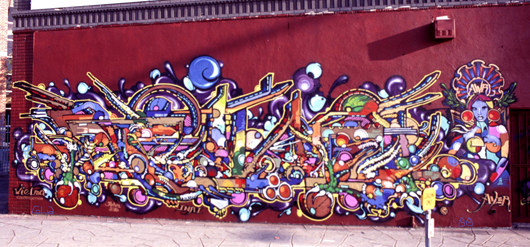
Where is the best place or places to find graffiti around LA?
Steve Grody: There used to be three important yards, Venice Pavilion, Motor, and Belmont, that ran for some years, twenty years in the case of Belmont. Other yards have gone back and forth from active to inactive, and occasionally, such as with Commerce yard, back to active. And of course the L.A. River has always been active. There are spots in East L.A., Commerce, the North East (Highland Park, Atwater), Hollywood, South Central and the West Side that have been single hits, short time runs as well. Right now, there are (off the top of my head) perhaps three or four areas that are painted and open to writers (in contrast to walls controlled by a single individual or crew). So the answer to the question is where is the best graffiti on a particular day or week.
Over the years of documenting the graffiti movement is there one particular wall or painting that you can call a favorite?
Steve Grody: No, too many good walls have been done to call one a favorite?
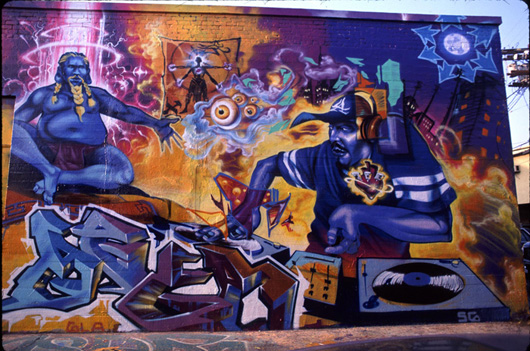
What’s a typical day for Steve Grody?
Steve Grody: I teach street-oriented self-defense (JKD and Filipino Kali) privately, so my photo time is planned around that, but I keep a running list of things to shoot. The list comes from talking to people I run into about what’s up on the walls; from seeing postings on photo sites and then contacting people that may be able to tell me where those things are; from just paying attention as I drive around and often on the way to one site I’ll see things I didn’t expect to see. A few people will call with a heads-up. So I plan a run going from one site to another. I might start in Commerce, then up to East L.A., check a few spots Downtown and in the Arts District, then off to either the North East, Alhambra/Lincoln Park or Hollywood and then down to the Mid-city area or West Side and then home.
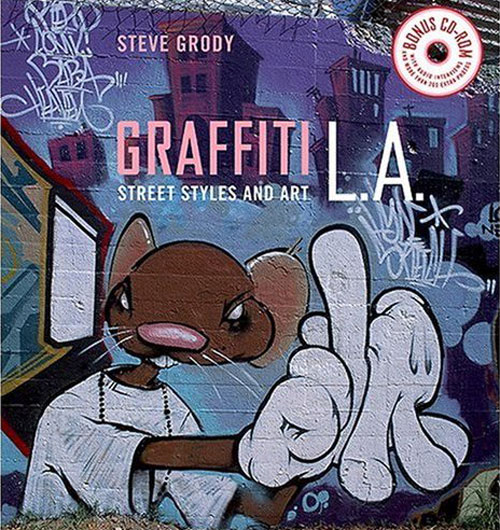
What was your biggest challenge when creating the book “Graffiti LA”?
Steve Grody: The story of L.A. graffiti is like a puzzle that could legitimately be put together in a dozen ways, so there were a number of challenges. I wanted to balance three areas: history, technique and aesthetics, and the personal/sociological aspects. I also wanted to talk about ethical issues. Within the area of history, I wanted to work really hard to make sure that the East Side, West Side, South Side, North East and the Valley were all represented properly and to not jock one crew or area. I wanted to go more deeply into technical and design issues more than I had seen written about before, how that developed and who influenced who. I wanted the photos to show important contributors from the first generation onward, and not just show the stuff happening now.
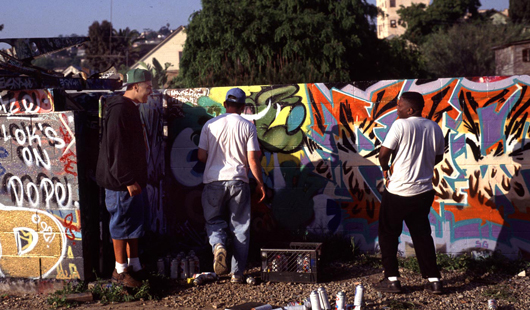
You have a ton of great graffiti legends throughout the book. How did you go about getting in contact with these artists?
Steve Grody: I met writers over the years, and some trusted me pretty quickly, while others took years of seeing me around to realize I was sincere in documenting the scene. When I started working on the book, I asked everyone I could “Who do you think is important to the story” and how could I get in touch to see if they would be available for an interview. There ended up being just a handful I’m sorry I couldn’t get to. Some were hesitant because they have been so misquoted or misrepresented before, but everyone that was interviewed felt good about the way they came off. I’ve gotten a lot of love for the book and god knows, the graff crowd will tell you if they think you screwed up somehow.
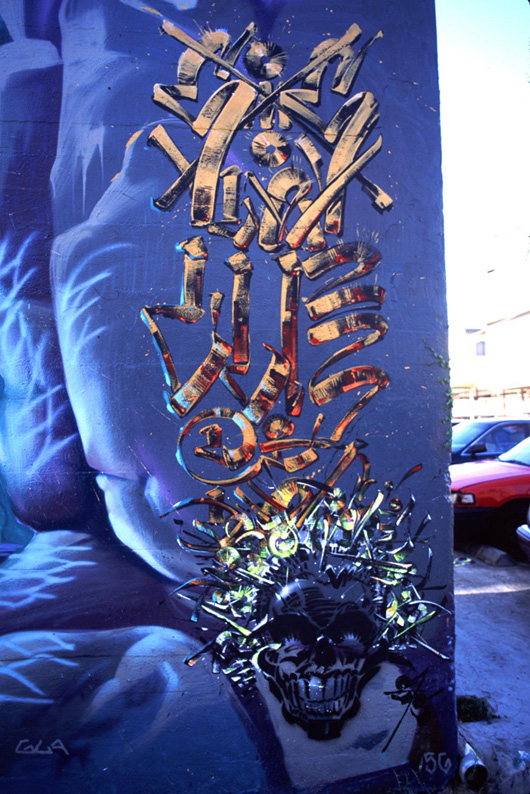
Are you working on any new graffiti projects at the moment or in the future?
Steve Grody: I am, but I don’t want to be more specific until it’s more developed. I will say if it comes off as I’d like, it will be very special. A number of writers that have photos have asked about how to put a book together, and I tell them that a publisher may not care if you have a ton of photos if they are not good photos and you can say something distinctive. This is the time of graff and street art book glut and most of them don’t say anything interesting.
Do you have a favorite graffiti artist? Who would it be and why?
Steve Grody: I have a number of favorites from various crews. All of the major crews have talented guys and some weaker links. I don’t want to mention names because I try to get along with all the crews and I’m sure I’ll piss someone off if it turns out I like more writers from one crew than another.

How often are you out looking at graffiti?
Steve Grody: Two to five days a week.
Since you’ve been involved with graffiti for a great deal of time. What are your thoughts on graffiti and the internet?
Steve Grody: The internet is a sharply double edged sword. It’s great for seeing what’s out there with ease, but too many kids don’t get around to really study things in person and they need the personal mentorship that the net does not provide for the best quality development.
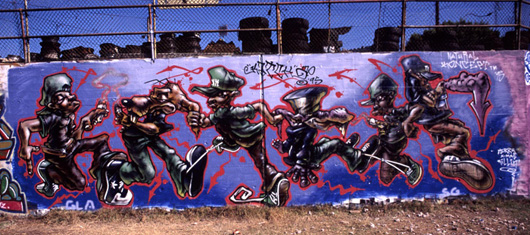
What are you predictions on the outcome of future graffiti? Where do you think it will go?
Steve Grody: Predictions rarely pan out, but just because graffiti is so ubiquitous now in pop graphics and merchandising, it’s natural that it would fall off at some point. On the other hand, while movements generally come and go, graffiti is one of the most available ways for kids to be kids and I don’t know that that will change quickly.
Any last words for the Senses Lost readers?
Steve Grody: Some people are standing on the shoulders of giants, and others are standing on dog shit in a ditch. Choose who you want to be carefully. It’s always easier to be a toy than someone really making a contribution to the world.
| More Interviews >> |









4 Comments
say bro you get down nice work. yahoo me so i can see if you can help me out with sum logos for my clothing brand holla “GOD BLESS”
love the oldschool flavor, so OG!
Yoh man, this book ya put together really captures the different styles of graffiti an damn i gotta say this really does inspire me, im 18 an i live in a city were there are no other graffiti artist and i mean none i have no mentorship yet im told i throw down some tight shit itd be nice if ya could send me some pointer in a email…
– JRx
“2012″
I think this is among the most vital information for me.
And i’m glad reading your article. But wanna remark on some general things, The site style is wonderful, the articles is really great : D. Good job, cheers